The operational services framework addresses the type of services that can be offered by the Program Delivery Unit (PDU) to the beneficiaries of the program. There are 7 levels of services delivered by the analysed models in CITYnvest:
- Marketing;
- Assessment;
- Financial advice;
- Facilitation;
- Integration;
- Aggregation;
- Financing.
The scheme below summarises the different services. Further details are provided below on the three main operational services facilitation, integration and aggregation.
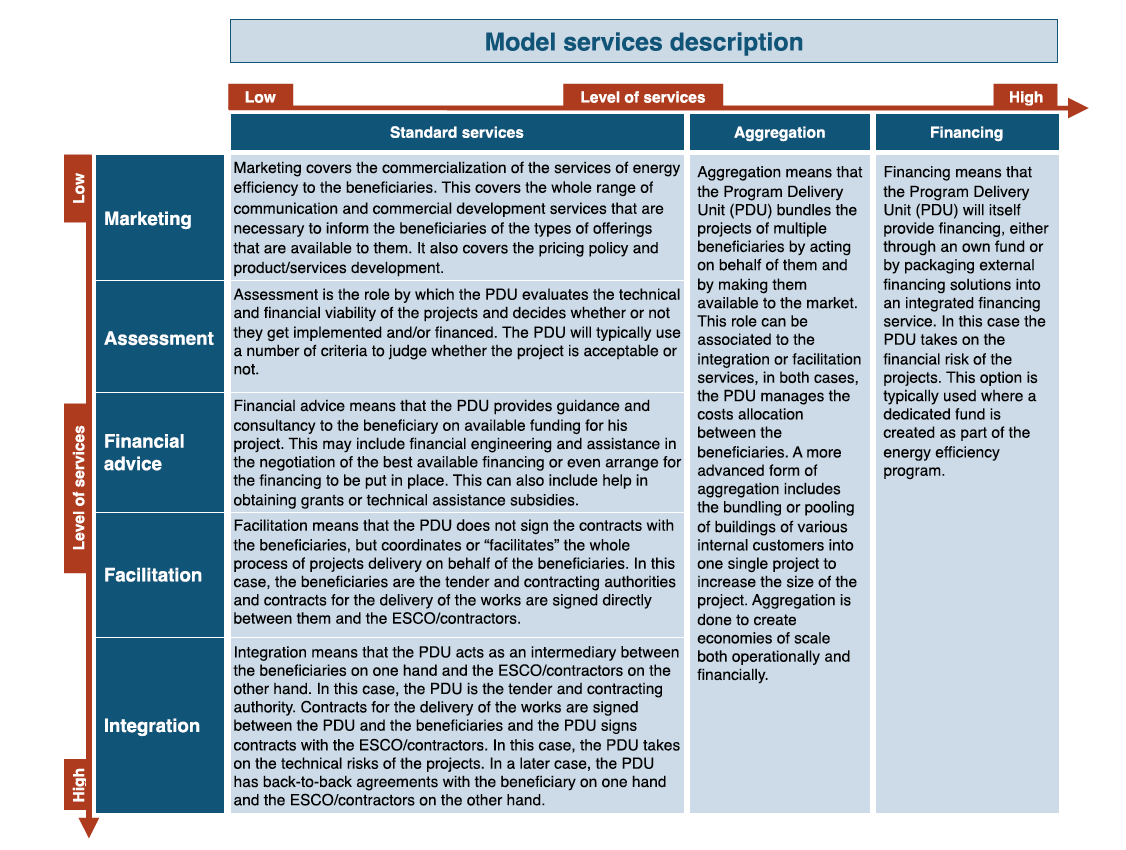
The Facilitation Model
Facilitation means that the Program Delivery Unit (PDU) acts as assistant to the project owner, but is not involved in the contractual level. The Program Delivery Unit (PDU) coordinates or “facilitates” the whole process of project delivery on behalf of the beneficiary while the contracts are signed directly between the beneficiary and the contractors. This model is often applied in case of the EPC/ESC implementation model, where the contract is signed directly between the beneficiary and the ESCO. Managing the tendering process is typically part of facilitation services offered in case of EPC or ESC projects.
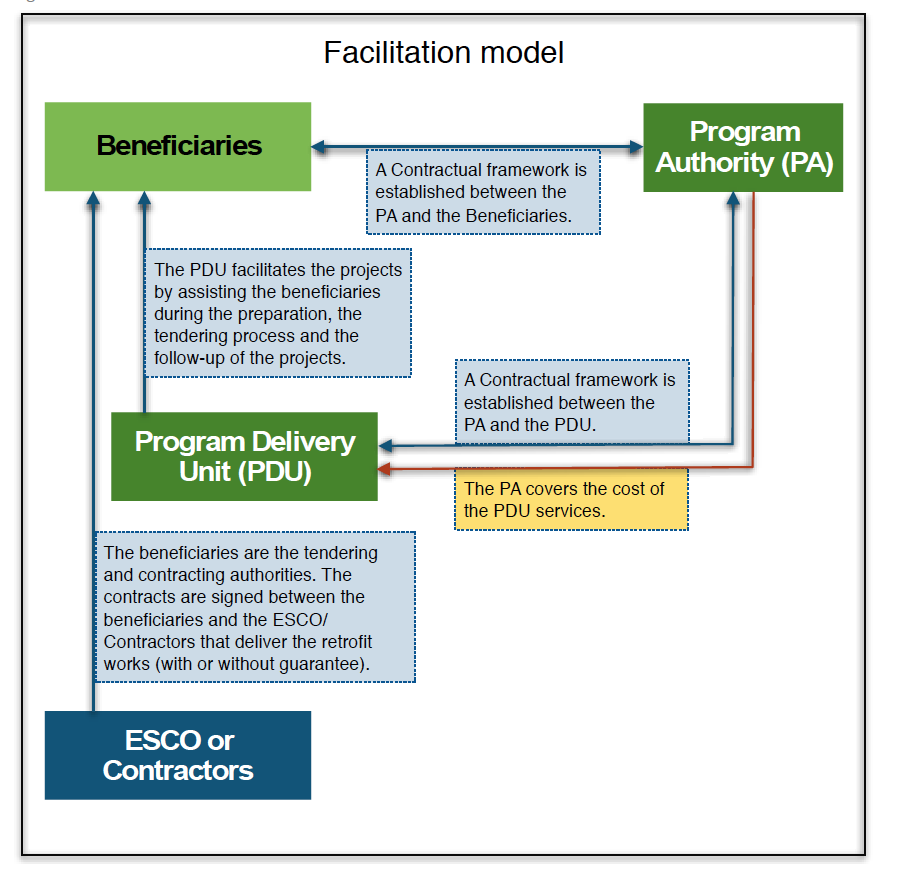
In the Facilitation model, the Program Delivery Unit (PDU) does not take on the technical and performance risks of the project; those remain on the beneficiary’s shoulders or on the ESCO/Contractor (in case of the EPC/ESC implementation model). By definition, in the Facilitation model, the Program Delivery Unit (PDU) does not participate in the financing, but offers, in most cases, guidance to the beneficiaries to find the best financing solutions, either through ESCO’s (see ESCO Financing Model) or banks and/or third parties. In the most advanced cases, the financing is integrated via a dedicated operator (Investment fund and/or Citizens funding platform) upstream of the facilitation services.
The Integration model
Integration means that the Program Delivery Unit (PDU) acts as an intermediary between the beneficiary on one hand and the contractors or subcontractors on the other hand. This means that the contract for the delivery of the energy efficiency is signed between the integrator and the beneficiary and that the integrator signs contracts with the (sub)contractors. In the Integration model, the Program Delivery Unit (PDU) takes on the technical and performance risks of the project, unless it has back-to-back agreements with the beneficiary on one hand and the ESCO on the other hand (in the case of the EPC/ESC model).
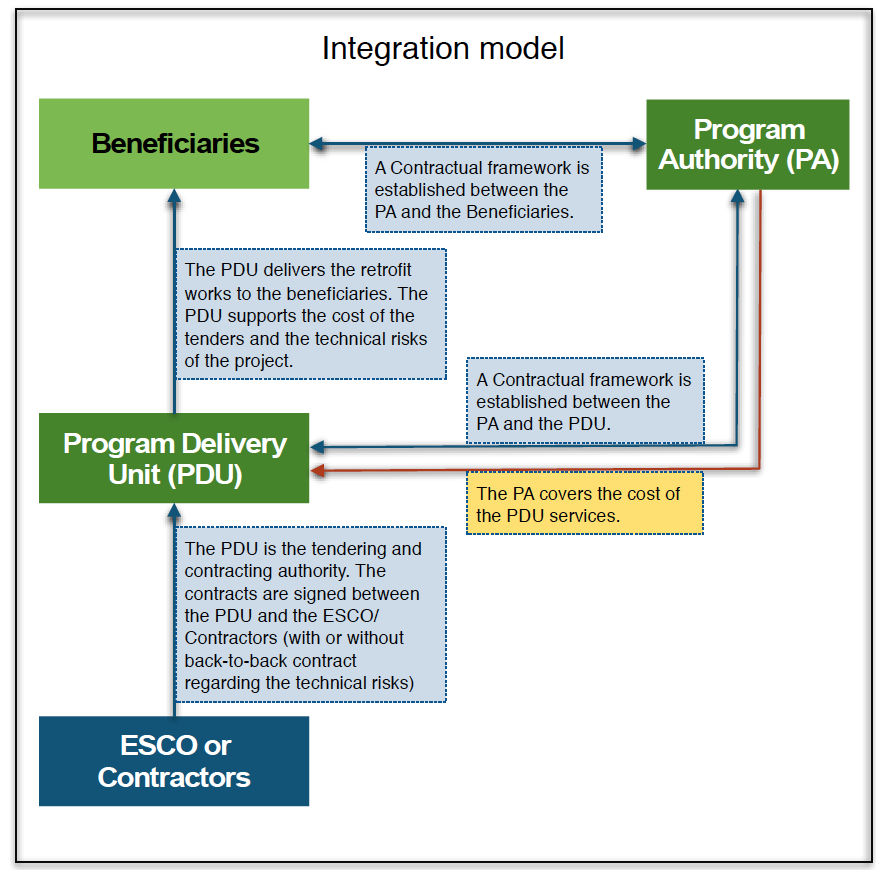
A priori, the Integration Model also includes financing (see PDU Financing and Investment fund models), unless the beneficiary finances the project with equity or debt. For this reason, it needs much greater capital and debt capacity to finance the projects. If funding is also part of the integration, it is either the ESCO/Contractors that provides it, or it is subject to a separate implementation, with or without competition with banks and/or third parties.
The integration model is often associated with the Separate Contractor Based implementation model, although it can also be applied to EPC or ESC. The two cases are described below:
The SCB Integration model: In the SCB integration model, the Program Delivery Unit (PDU) truly plays the role of integrator of a large number of stakeholders or subcontractors, for carrying out audits, studies, works or services, to offer a "packaged" solution to the beneficiaries. Its role is first to select these subcontractors, possibly putting them into competition; then make them execute their tasks. The job is essentially projects management and coordination, but nevertheless it requires a good knowledge of the different techniques used. Taking into account the complexity of energy efficiency projects, the adequate command of all techniques is not easy. This will require from the PDU strong quality control procedures and tools.
The EPC/ESC Integration model: In the ESC/EPC Integration model, the Program Delivery Unit (PDU) acts on behalf of the beneficiaries and manages the project process from the tendering to the implementation and follow-up of the project. In this case, this is one project, structured around a "back-to-back" contract between the Program Delivery Unit and the ESCO/Contractor.
The Aggregation model
The aggregation model is a variation of the two previous models where the projects and/or the beneficiaries are bundled/pooled and/or aggregated in one or more larger project units:
Bundling/pooling:
Bundling/pooling means that the beneficiary or the Program Delivery Unit (PDU) bundles/pools the projects in one or more single projects to increase the size of the projects in order to make these feasible and/or to create economies of scale both operationally and financially. This approach could be applied either to the EPC/ESC methodology as well as to the Separate contracting methodology.
Aggregation:
Aggregation means that the Program Delivery Unit (PDU) bundles the projects or buildings of multiple beneficiaries into a single larger project. Aggregation is done to create economies of scale both operationally and financially. The aggregation service can include bundling/pooling of projects. This approach requires that the Program Delivery Unit (PDU) is entitled to act on behalf of the beneficiaries.
The two figures below describe the application of aggregation to both Facilitation and Integration models.
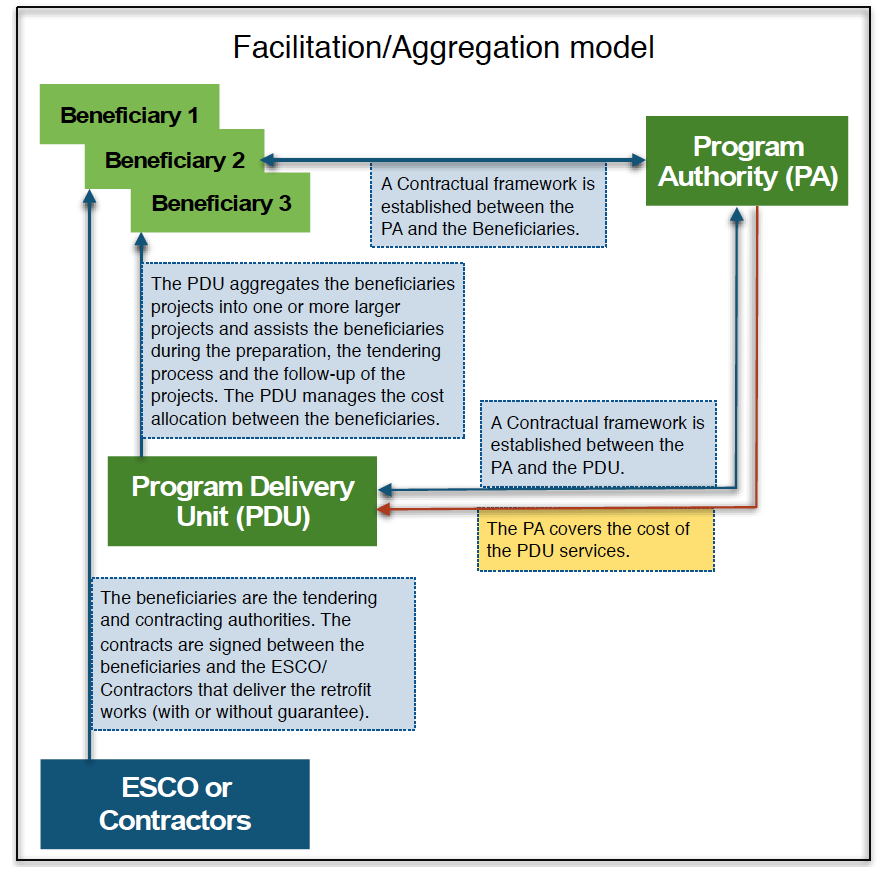
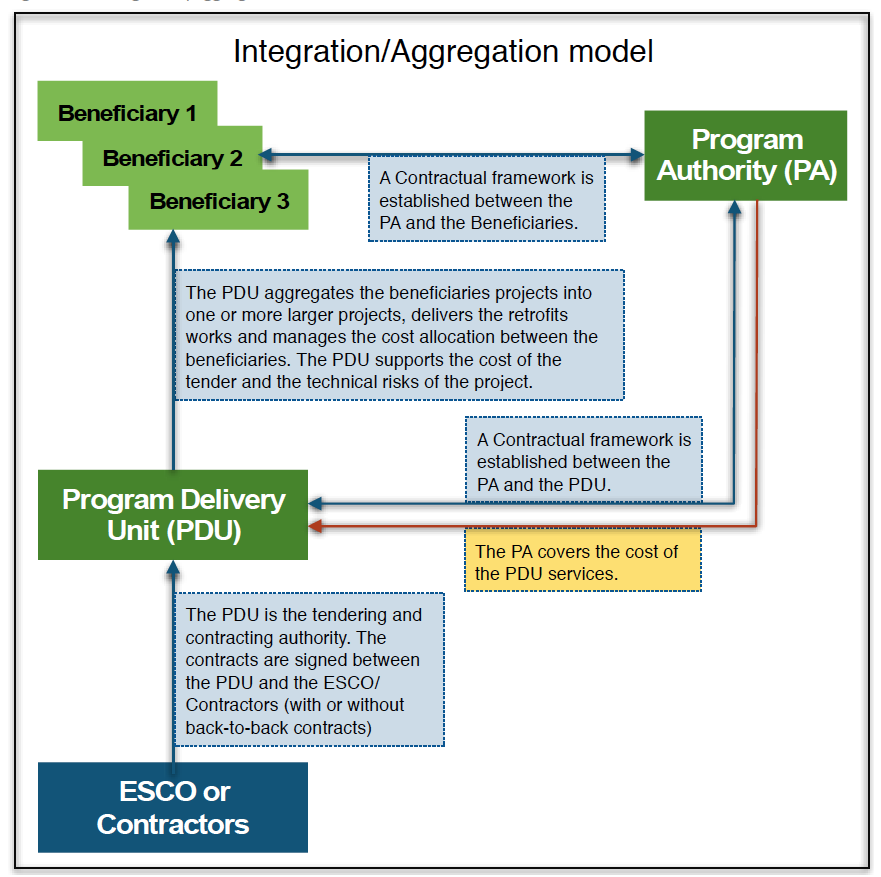
What are the operational services offered by the models?
The figure below details the operational services offered by the 24 analysed models in CITYnvest.
Regarding the operational framework itself, 16 models are applying facilitation against 8 for integration, while 15 of them are applying aggregation. Regarding the financing framework, while 18 models offer financial advice, about 14 models integrate the financing in their service scope, with 3 models that are offering financing services only. It is mainly the models applying integration that integrate also the financing. Almost all models offer marketing and assessment services (23 out of 24). It is mainly French and Belgian public authorities that have developed integration models with integrated financing, while the facilitation model with conventional and/or Third Party Financing is more common in other countries. The reason probably is that both countries have a stronger culture of integration of public services.
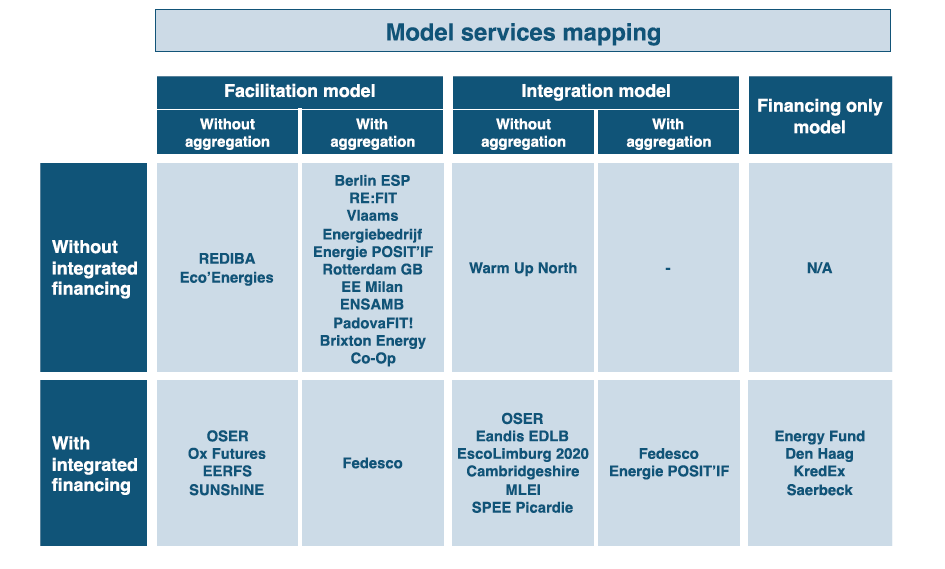


 Print HTML
Print HTML